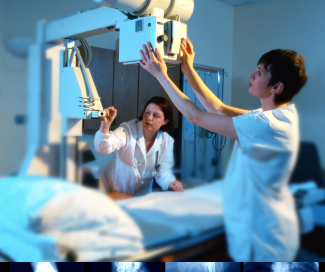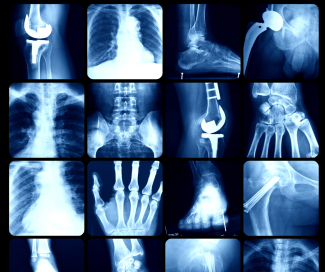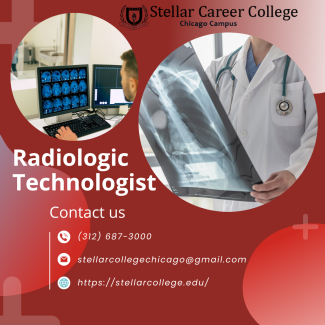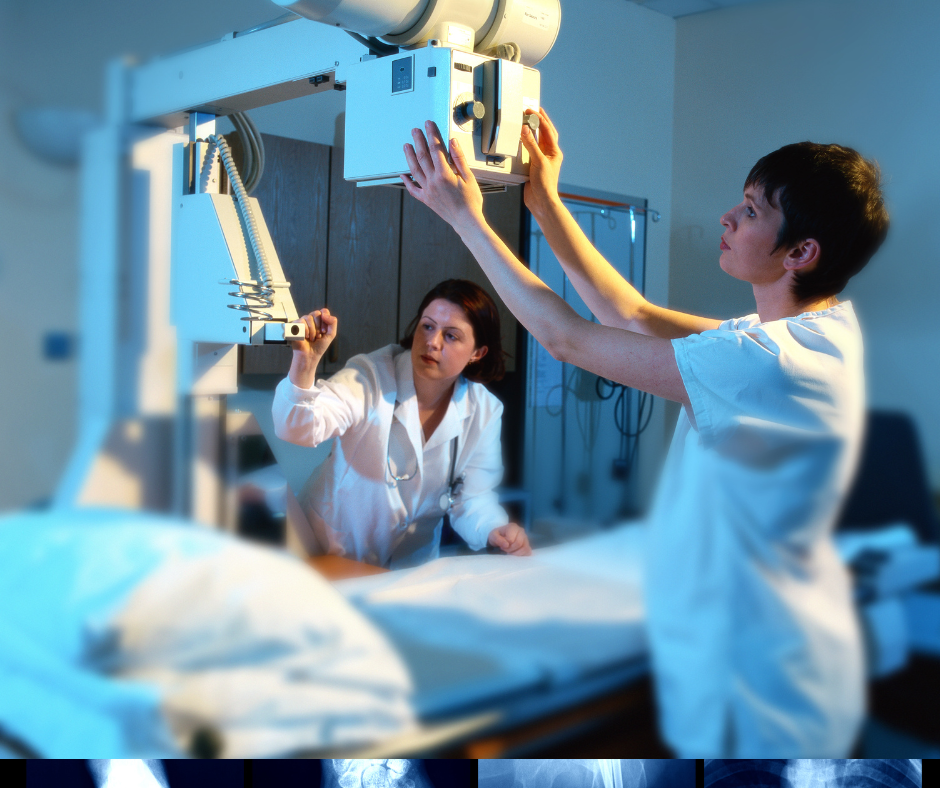Radiologic Technologists: A Comprehensive Guide to the Field

Discover the world of radiologic technology through this comprehensive guide. Learn about the roles, responsibilities, and educational requirements of a radiologic technologist. Explore the different modalities they work with and gain insights into the future prospects of this exciting field.
Radiologic technology plays a crucial role in the diagnosis and treatment of various medical conditions. Radiologic technologists, also known as radiographers or X-ray technologists, are highly skilled professionals who operate imaging equipment to produce images of patients’ internal structures. These images aid physicians in diagnosing diseases, injuries, and abnormalities.

Introduction
Radiologic technologists are integral members of the healthcare team, working alongside physicians and other medical professionals. They play a vital role in delivering accurate and high-quality diagnostic imaging services. If you are considering a career in healthcare and have an interest in technology, becoming a radiologic technologist might be an excellent path for you.
In this comprehensive guide, we will delve into the world of radiologic technology. We will explore the responsibilities and duties of a radiologic technologist, the educational and certification requirements, and the various imaging modalities they work with. Additionally, we will discuss the future prospects and advancements in this dynamic field.
Let’s embark on a journey to uncover the exciting world of radiologic technology.

| Table of Contents |
|---|
| 1. Role of a Radiologic Technologist |
| 2. Educational Requirements |
| 3. Certification and Licensure |
| 4. Diagnostic Radiography |
| 5. Computed Tomography (CT) |
| 6. Magnetic Resonance Imaging (MRI) |
| 7. Nuclear Medicine |
| 8. Radiation Therapy |
| 9. Interventional Radiology |
| 10. Future Trends and Advancements |
Role of a Radiologic Technologist
Radiologic technologists are skilled healthcare professionals responsible for capturing medical images of patients using various imaging modalities. They work closely with radiologists and other physicians to ensure accurate and high-quality images are obtained. A radiologic technologist must possess excellent interpersonal skills, as they interact with patients of all ages and conditions.
In their role, radiologic technologists prepare patients for procedures, explain the imaging process, and position patients to obtain optimal images. They must follow strict safety protocols and ensure patients are shielded from unnecessary radiation exposure. Moreover, they maintain and operate imaging equipment, troubleshoot technical issues, and ensure the equipment is calibrated correctly.
Educational Requirements
To become a radiologic technologist, one must complete an accredited educational program. These programs are typically offered by colleges, universities, or hospitals and result in either an associate’s or bachelor’s degree. The coursework covers anatomy, physiology, patient care, medical ethics, and radiation physics. Clinical rotations provide hands-on experience in various imaging departments.

Certification and Licensure
Upon completing an accredited program, aspiring radiologic technologists must obtain certification from the American Registry of Radiologic Technologists (ARRT). Certification requires passing an examination that tests the knowledge and skills necessary for competent practice. Additionally, some states may require licensure, which involves meeting specific criteria and passing a state-specific examination.
Diagnostic Radiography
Diagnostic radiography is one of the primary modalities in radiologic technology. It involves capturing X-ray images of the body to aid in diagnosing and monitoring medical conditions. Radiologic technologists position patients, adjust X-ray equipment, and ensure optimal image quality. They work closely with radiologists to analyze images and provide accurate diagnostic information.
Computed Tomography (CT)
Computed Tomography (CT) utilizes X-ray technology and computer processing to generate detailed cross-sectional images of the body. Radiologic technologists operating CT scanners must have specialized knowledge and skills to capture high-resolution images. CT scans are commonly used in the diagnosis of conditions affecting the head, chest, abdomen, and musculoskeletal system.
Magnetic Resonance Imaging (MRI)
Magnetic Resonance Imaging (MRI) uses powerful magnetic fields and radio waves to create detailed images of internal body structures. Radiologic technologists operating MRI scanners must ensure patient safety and comfort throughout the procedure. MRI scans are particularly useful in evaluating soft tissues, such as the brain, spinal cord, joints, and organs.
Nuclear Medicine
Nuclear medicine involves the use of radioactive materials to diagnose and treat diseases. Radiologic technologists in nuclear medicine administer radiopharmaceuticals to patients and operate imaging equipment that detects and captures the distribution of radioactive substances in the body. These images assist in diagnosing conditions related to organs, bones, and metabolic activity.
Radiation Therapy
Radiation therapy utilizes high-energy radiation to treat cancer and other conditions. Radiologic technologists working in radiation therapy assist in planning and delivering precise doses of radiation to targeted areas of the body. They work collaboratively with radiation oncologists and medical physicists to ensure accurate treatment delivery while prioritizing patient safety.
Interventional Radiology
Interventional radiology involves minimally invasive procedures guided by imaging techniques. Radiologic technologists in this field assist physicians in performing diagnostic and therapeutic procedures using X-ray, CT, or MRI guidance. These procedures often eliminate the need for traditional surgery and result in quicker recovery times for patients.
Future Trends and Advancements
The field of radiologic technology is constantly evolving, driven by technological advancements and medical breakthroughs. Future trends include the integration of artificial intelligence in image analysis, improved imaging techniques for early disease detection, and advancements in radiation therapy delivery. Radiologic technologists must stay updated with emerging technologies and continue their professional development to adapt to these changes effectively.

Frequently Asked Questions (FAQs)
- What is the average salary of a radiologic technologist?
- The average salary of a radiologic technologist varies based on factors such as location, experience, and specialization. On average, it ranges from $50,000 to $70,000 per year.
- How long does it take to become a radiologic technologist?
- The educational path to becoming a radiologic technologist typically takes around two to four years, depending on whether you pursue an associate’s or bachelor’s degree program.
- Are there opportunities for career advancement in radiologic technology?
- Yes, there are several avenues for career advancement in radiologic technology. Technologists can specialize in specific modalities, pursue advanced certifications, or transition into roles such as radiology supervisor, department manager, or educator.
- What are the work settings for radiologic technologists?
- Radiologic technologists work in various healthcare settings, including hospitals, clinics, diagnostic imaging centers, and physicians’ offices. They may also find employment in research facilities, mobile imaging units, or educational institutions.
- Is radiation exposure a concern for radiologic technologists?
- Radiologic technologists follow strict safety protocols to minimize radiation exposure for both patients and themselves. They utilize protective equipment, employ shielding techniques, and adhere to dose limits recommended by regulatory bodies.
- Can radiologic technologists specialize in specific areas?
- Yes, radiologic technologists can specialize in areas such as mammography, cardiovascular-interventional radiography, computed tomography (CT), magnetic resonance imaging (MRI), nuclear medicine, or radiation therapy.
- How is the job outlook for radiologic technologists?
- The job outlook for radiologic technologists is promising. As the demand for diagnostic imaging services continues to rise, there will be an increased need for skilled technologists. The field is expected to grow at a faster-than-average rate.
- What are the essential qualities of a successful radiologic technologist?
- Strong communication skills, attention to detail, technical proficiency, empathy, and adaptability are crucial qualities for a radiologic technologist. They must also demonstrate professionalism, ethical conduct, and a commitment to patient care.
- Can radiologic technologists pursue further education?
- Yes, many radiologic technologists choose to pursue advanced degrees, such as a bachelor’s or master’s degree in radiologic sciences or healthcare administration. These higher qualifications can lead to leadership or research roles.
- How can I become a licensed radiologic technologist?
- Licensing requirements for radiologic technologists vary by state. It usually involves passing a state-specific examination after completing the necessary educational and certification requirements.
-
- What is the difference between a radiologic technologist and a radiologist?
- A radiologic technologist is responsible for operating imaging equipment and capturing medical images, while a radiologist is a medical doctor who interprets and diagnoses the images obtained by the technologist. Radiologists have advanced training in radiology and specialize in interpreting various imaging modalities.
- Can radiologic technologists specialize in more than one modality?
- Yes, many radiologic technologists choose to specialize in multiple modalities to broaden their skill set and increase their career opportunities. For example, a technologist may be certified in both computed tomography (CT) and magnetic resonance imaging (MRI), allowing them to work in both areas.
- What are the potential risks of radiation exposure for radiologic technologists?
- Radiologic technologists are trained to follow strict safety protocols to minimize radiation exposure. While there is some occupational exposure to radiation, it is kept well within safe limits. Technologists wear protective equipment and use shielding techniques to reduce their exposure as much as possible.
- Are there opportunities for career advancement beyond being a radiologic technologist?
- Absolutely! Radiologic technologists can pursue various career paths within the field. They can become educators, administrators, researchers, or move into specialized roles such as mammography technologist, cardiac catheterization technologist, or CT/MRI supervisor. Continuing education and obtaining advanced certifications can open up new opportunities for career growth.
- What are the challenges faced by radiologic technologists in their daily work?
- Radiologic technologists may face challenges such as working with patients who have physical limitations or fear of procedures. They may also encounter emergency situations that require quick decision-making and problem-solving skills. Additionally, staying up-to-date with rapidly advancing technology and maintaining accuracy in image capture can be demanding but rewarding aspects of the job.
These additional FAQs aim to provide further clarity and address common inquiries related to radiologic technology. If you have more questions or seek specific information, feel free to reach out to a qualified radiologic technologist or healthcare professional for comprehensive guidance.
- What is the difference between a radiologic technologist and a radiologist?
Conclusion
Radiologic technology is a fascinating and rewarding field that combines the power of medical imaging with patient care. Radiologic technologists play a vital role in diagnosing and treating various medical conditions, ensuring accurate and high-quality imaging services. With advances in technology and an increasing demand for diagnostic imaging, the future of radiologic technology holds immense opportunities.
Whether you are considering a career in radiologic technology or seeking more information about this field, this comprehensive guide has provided you with valuable insights. From the roles and responsibilities of radiologic technologists to the different imaging modalities they work with, you now have a better understanding of this dynamic profession.
As technology continues to advance, the field of radiologic technology will continue to evolve, creating new avenues for growth and innovation. By staying updated with emerging trends and enhancing their skills, radiologic technologists can contribute to the ever-improving field of diagnostic imaging.

